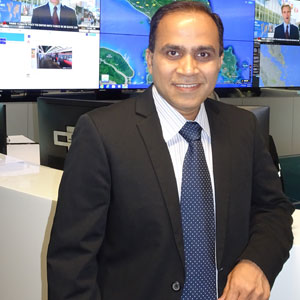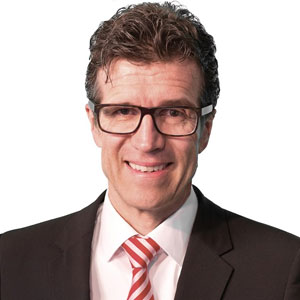THANK YOU FOR SUBSCRIBING

Shaping the City: Enabling Strategic Decision Making Through Digital Mapping and Analytic Tools
Ilia Houridis, Director, City Shaping, City of Adelaide


Ilia Houridis, Director, City Shaping, City of Adelaide
Ilia Houridis is an accomplished public sector executive with extensive experience across State and Local Government. Focused on community-driven outcomes, he delivers exceptional results through values-based leadership. Committed to collaboration and operational excellence, Houridis cultivates high-performing teams and cultures aligned with authenticity, integrity, diversity and accountability.
Through this article, Ilia Houridis shares his insights on the City Plan - Adelaide 2036, employing digital technology such as 3D mapping to foster sustainable growth, economic vitality and social well-being. With the goal of nearly doubling Adelaide's resident population by 2036, it emphasizes collaboration, innovation and effective governance among stakeholders.
What is the City Plan?
Since the 1970s, the City of Adelaide has been developing structure plans that guide its growth and change.
Whilst these plans were extremely valuable for analyzing the complex needs of a capital city, culminating in a static four-year plan, they were not flexible or responsive to changing community dynamics and priorities. Master planning and growth forecasting require continual refinement based on economic shifts, demographic trends, technological advancements and environmental factors.
City Plan—Adelaide 2036 is a new way of doing urban planning. Using 3D technology, we can map complex conditions to build a robust evidence base and analyze growth scenarios and development options to get the best results for the community, environment and economy. As a dynamic digital tool, the City Plan can provide a central place to spatially apply and align strategies. Importantly, we can track our progress.
What are we aiming to do?
The City of Adelaide has set a target to almost double its resident population from the current 26,000 to 50,000 by 2036. We want City Plan to build the confidence of current and future residents, businesses and developers to invest in the continual growth of our city.
Building on existing plans and commitments, City Plan - Adelaide 2036 promotes sustainable residential growth centered around the needs of its people, now and into the future. It will help us drive economic vitality, prioritize social well-being, manage environmental sustainability and be ready to deal with potential challenges quickly and more easily to create a sense of community and connectedness.
How are we using digital technology to achieve this?
Using digital spatial technologies in 2D and 3D formats allows us to analyze complex interactions and weigh up options. We’ve incorporated over 400 data layers into a digital tool, City of Adelaide Digital Explorer (CoADE), using the ArcGIS Urban platform, and used the rich information to develop metrics to analyze and measure interventions, outcomes, and progress.
We’ve also developed a methodology to help us assess the optimal location for various types of social and transport infrastructure, which also considers the reality that unmitigated climate change will have on the city’s accessibility.
With 3D technology, we can map intricate conditions, creating a strong foundation for analyzing growth scenarios and development options to achieve optimal outcomes for the community, environment and economy
By regularly updating data such as our development pipeline, we can focus our efforts on where we know the city will change the most and in consideration of factors including climate resilience, adaptive reuse and the urban realm. Our annual infrastructure investment can then be targeted towards areas that benefit the local community the most.
What are some of the benefits of using digital technology?
Developing the City Plan has been a great learning experience about the breadth of opportunities a digital strategic plan can offer us to analyze and track our work. Challenges have included training, security and transforming a workplace to a more collaborative platform.
Importantly, we have built confidence within our elected body that we have the mechanisms to test and flex to deliver on the commitments within the various Council strategies and plans.
We have used digital technology to bring the Council and other stakeholders from the community, business, and other advocacy and interest groups on the journey and communicate how the City of Adelaide will grow and develop over the next 10 years.
We also like the fact that, as a Capital City Council, we are leading the way by transforming the way we carry out our planning and strategic decision-making and improving urban governance through effective communications with other tiers of government. The City Plan has enabled integrated planning of local and state government initiatives and provides quantifiable measures to evaluate and guide future interventions.
It also provides a great approach to upskilling our workforce, improving engagement with the university sector and enhancing our reputation as an employer of choice by promoting new and integrated ways of working.












